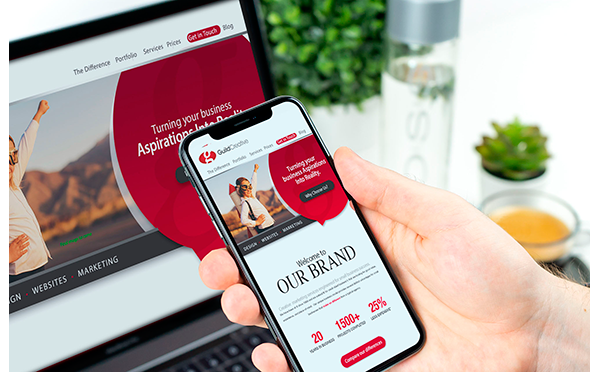A mobile-friendly website design is imperative.
July 15, 2019
Don’t make Google unhappy!
A mobile-friendly website is no longer an option; it’s a requirement. This isn’t new – we’ve known for years that more and more people are using mobile devices to browse and search online.
The next time you’re sitting in a busy coffee shop, airport, or shopping mall, take a look around and see how many people are quietly staring at their phones. Chances are, you’ve already taken notice. Not since the creation of the television has our society been so captivated by a piece of technology as we are by the smartphone. The amount of information, entertainment, shopping, and other resources available at a user’s fingertips has made mobile devices almost a necessity for some people.
Since 2017, web traffic to all sites from mobile devices has hovered around the 50% mark. That means about half of your customers are likely seeing your site from their phone. Without mobile-friendly, responsive design, the user experience could actually be driving those valuable customers away as they choose to save the search until a computer can be used.
What is responsive website design solution?
Responsive web design (RWD) is an approach to website creation that customizes the layout, appearance, and functionality of a given site or page to the specific device and orientation or window size the user is operating. Text, images, menus, and forms automatically resize and rearrange to provide the best user experience. The need for zooming or scrolling side-to-side is eliminated, allowing customers to jump right into the content they’re looking for in a more customized and personalized web environment. In addition to providing a better user experience, RWD is significantly more cost effective than designing and maintaining a desktop and mobile website.
“But my customers don’t really use mobile devices, and prefer computers”.
This could be a very accurate statement, and data can certainly prove that web traffic to your site does not hit that 50% mobile device statistic. However, there are two factors that could be keeping mobile users away from your site. First, the user experience on smartphones or even tablets could be a reason for a high bounce rate. It’s possible how your images and text are rendering is an immediate call for a laptop or desktop, and potential customers are abandoning their visit. Google algorithms actually give mobile-friendly sites a bump up in the search results list. Your competitors could actually be stealing your spotlight before customers scroll far enough down the list to find you.
So how do my company and customers really benefit?
In 2016, 36.6 million internet users were accessing the web exclusively from mobile devices. In 2021, that number is predicted to increase to 52.3 million. How many of those customers would you like to see enter your sales funnel? Responsive design can expand your reach to those who prefer the smaller devices. For all customers, existing and potential, a consistent experience across all devices can actually increase leads and sales. Also, designing with mobile visits in mind can help to streamline content in order to really focus on what is most impactful. Your teams actually save time and money on managing the content as well as analyzing and reporting results. CTA Responsive sites are where it’s at—and where your site should be at as well!
Call Steve to get your site responsive and mobile ready–262-677-4696.







